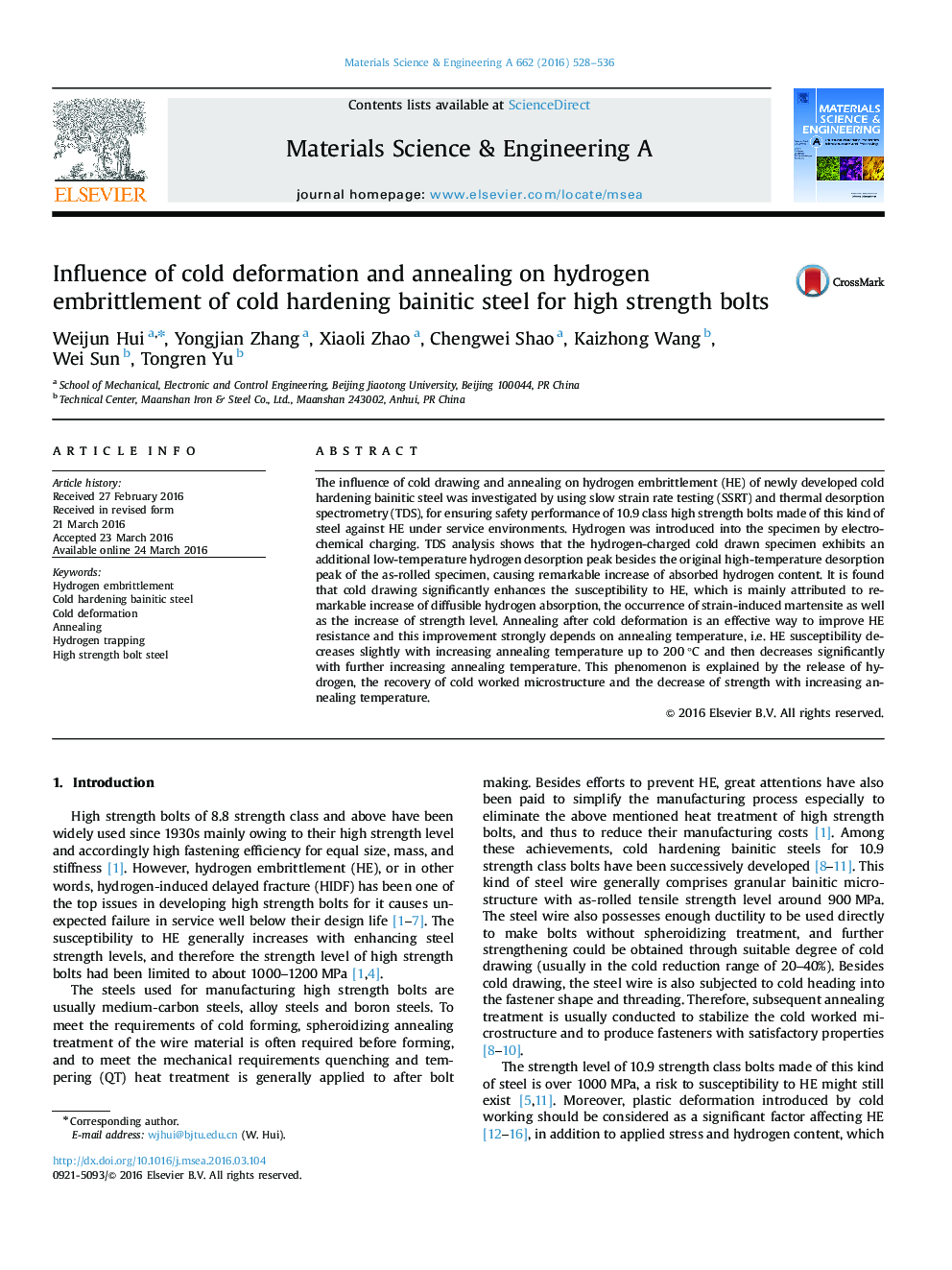| Article ID | Journal | Published Year | Pages | File Type |
|---|---|---|---|---|
| 1573486 | Materials Science and Engineering: A | 2016 | 9 Pages |
Abstract
The influence of cold drawing and annealing on hydrogen embrittlement (HE) of newly developed cold hardening bainitic steel was investigated by using slow strain rate testing (SSRT) and thermal desorption spectrometry (TDS), for ensuring safety performance of 10.9 class high strength bolts made of this kind of steel against HE under service environments. Hydrogen was introduced into the specimen by electrochemical charging. TDS analysis shows that the hydrogen-charged cold drawn specimen exhibits an additional low-temperature hydrogen desorption peak besides the original high-temperature desorption peak of the as-rolled specimen, causing remarkable increase of absorbed hydrogen content. It is found that cold drawing significantly enhances the susceptibility to HE, which is mainly attributed to remarkable increase of diffusible hydrogen absorption, the occurrence of strain-induced martensite as well as the increase of strength level. Annealing after cold deformation is an effective way to improve HE resistance and this improvement strongly depends on annealing temperature, i.e. HE susceptibility decreases slightly with increasing annealing temperature up to 200 °C and then decreases significantly with further increasing annealing temperature. This phenomenon is explained by the release of hydrogen, the recovery of cold worked microstructure and the decrease of strength with increasing annealing temperature.
Related Topics
Physical Sciences and Engineering
Materials Science
Materials Science (General)
Authors
Weijun Hui, Yongjian Zhang, Xiaoli Zhao, Chengwei Shao, Kaizhong Wang, Wei Sun, Tongren Yu,
